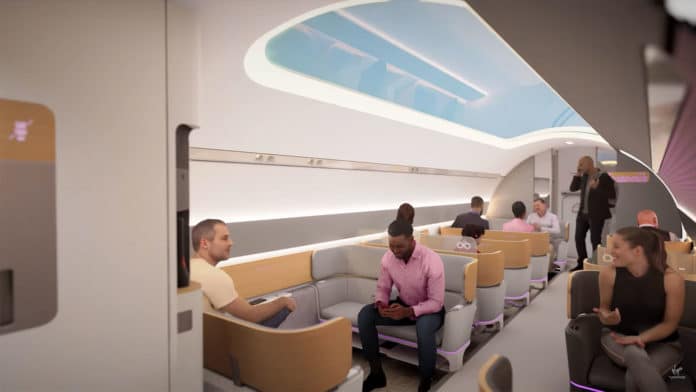After the first test with human passengers last November, Virgin Hyperloop unveiled its vision for the future hyperloop experience. The newly-released concept video takes the viewer step-by-step through a hyperloop journey, from arriving at the portal to boarding the pod.
These ultra-fast magnetically levitating pods travel through near-vacuum tubes and could reach speeds close to 1,200 km/h (745 mph), faster than on the plane and without being exposed to inclement weather. The computer-animated video focuses more on the ‘experience’ of enjoying a Hyperloop ride, complete with a new-look version of its transport pods.
The company founded by Richard Branson highlights that the passenger experience will have one of its keys in accessibility, ensuring that this new form of transportation will expand opportunities for the masses. While ticket prices will vary depending on the exact route, a recent study in Ohio found that, in addition to the environmental benefit, the cost will be closer to traveling by car than doing it by plane.
“It’s simple. If it’s not affordable, people won’t use it,” said Jay Walder, CEO of Virgin Hyperloop. “Daily high-speed transport is currently not feasible for most people, but we want to change that notion. Imagine being able to commute between cities that are currently hours apart in minutes – and the endless possibilities that open up.“
The hyperloop system would be able to transport thousands of passengers per hour, despite the fact that each vehicle carries up to 28 passengers. It is achieved by convoying, where vehicles are able to travel behind one another in the tube within milliseconds, controlled by Virgin Hyperloop’s machine intelligence software.
Virgin Hyperloop is currently paving the way for the regulation and certification of hyperloop systems around the world. The company aims to achieve safety certification by 2025, with commercial operations beginning in 2030. If all goes well, a future like the one shown in the video could be less than a decade away.
